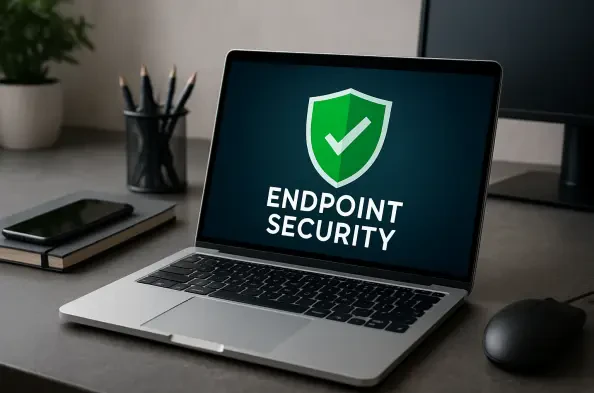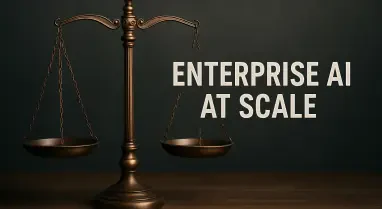In an era where cyber threats evolve at an unprecedented pace, staying ahead of potential risks is a critical priority for organizations worldwide, and the week of October 3rd brought a wave of significant advancements in endpoint security and network monitoring that promise to reshape the cybersecurity landscape. This roundup delves into the latest innovations and strategic moves by industry leaders such as Vectra AI, Swimlane, and Ivanti, offering a glimpse into how technology and human-focused strategies are converging to combat increasingly sophisticated attacks. From AI-driven automation to proactive defense mechanisms, these updates underscore the urgency of adapting to modern IT challenges like hybrid cloud environments and complex threat vectors. For IT professionals and cybersecurity enthusiasts alike, understanding these developments is essential to safeguarding digital assets in a world where breaches can have devastating consequences. Let’s explore the key announcements and trends that are defining the future of secure networks and endpoints.
Harnessing AI and Automation for Smarter Security
The integration of artificial intelligence and automation stands out as a transformative force in the cybersecurity updates for this week, with several companies leveraging these technologies to enhance their offerings. Auvik’s strategic promotion of Dan Zaniewski to Chief Technology Officer marks a clear commitment to advancing AI-driven network management solutions. This move emphasizes the potential of intelligent automation to streamline operations, reduce network downtime, and bolster resilience against disruptions. By embedding AI into the core of network monitoring, the focus shifts toward predictive capabilities that can anticipate issues before they escalate into major problems. Such advancements are not just about efficiency but also about creating systems that adapt dynamically to the ever-changing threat environment, ensuring businesses maintain operational continuity even under pressure.
Another compelling development in this space comes from Swimlane, which has introduced a Business Continuity Management Solution on its Turbine platform, utilizing agentic AI to proactively address risks. This solution is designed to minimize financial losses by automating risk mitigation processes and testing critical systems for vulnerabilities. Unlike traditional approaches that react to incidents after they occur, Swimlane’s innovation focuses on preemptive strategies, enabling organizations to simulate potential disruptions and refine their response mechanisms. This forward-thinking application of automation highlights a broader industry trend where AI is no longer just a tool for analysis but a cornerstone of operational stability, helping to bridge the gap between detection and resolution in real time. The implications for endpoint security are profound, as such tools reduce the window of opportunity for attackers to exploit weaknesses.
Addressing the Challenges of Hybrid and Multi-Cloud Security
With the rapid adoption of hybrid and multi-cloud architectures across industries, securing these intricate environments has emerged as a pressing concern, and this week’s updates reflect a concerted effort to tackle these challenges head-on. Vectra AI’s acquisition of Netography is a pivotal step in this direction, enhancing its portfolio with cloud-native network observability through the rebranded Vectra Fusion. This solution offers agentless monitoring, allowing for proactive defense mechanisms that span diverse digital infrastructures. As businesses increasingly distribute their operations across multiple cloud platforms, the ability to maintain visibility and control over these environments becomes paramount. Vectra AI’s strategic move illustrates how acquisitions can fill critical gaps in security offerings, ensuring comprehensive protection that evolves with the expanding digital footprint of modern enterprises.
Beyond acquisitions, the industry’s focus on hybrid cloud security also manifests in the development of tools tailored to address specific vulnerabilities inherent in distributed systems. The complexity of managing security across on-premises, private, and public cloud environments often leaves gaps that attackers can exploit, making unified observability a necessity. Solutions like Vectra Fusion aim to eliminate blind spots by providing a holistic view of network activity, which is crucial for identifying anomalies that could signal a breach. This trend underscores a broader recognition that traditional security models, designed for static infrastructures, are insufficient for today’s dynamic setups. By prioritizing scalability and adaptability, companies are better positioned to safeguard sensitive data and maintain trust in an era where cloud adoption continues to accelerate, reshaping how security teams approach their mission.
Emphasizing Proactive Defense Strategies
A noticeable shift from reactive to proactive cybersecurity strategies defines many of the announcements this week, highlighting an industry-wide push to stay ahead of potential threats. Dataminr’s expansion of Intel Agents to encompass physical events is a striking example, as it provides real-time context for emergency responses by connecting physical incidents, such as natural disasters, to their potential impact on cyber infrastructure. This innovative approach ensures that organizations can anticipate cascading effects, such as power outages or physical access breaches, that might compromise digital security. By integrating physical and cyber risk assessments, Dataminr offers a more comprehensive framework for situational awareness, allowing businesses to prepare for disruptions that extend beyond the digital realm and fortify their defenses accordingly.
In parallel, Ivanti’s release of Ivanti Connect Secure (ICS) version 25.X introduces significant enhancements aimed at platform hardening and minimizing attack surfaces. This update focuses on reducing vulnerabilities through a modernized operating system and fortified gateway features, reflecting a customer-driven commitment to preemptive security. The emphasis on strengthening the foundation of secure access solutions demonstrates how critical it is to address risks before they are exploited. Unlike reactive measures that scramble to contain damage after a breach, Ivanti’s approach prioritizes building robust barriers that deter attackers from the outset. This proactive mindset is becoming a benchmark for endpoint security, as it not only protects against current threats but also anticipates future challenges, ensuring that systems remain resilient in the face of evolving attack methodologies.
Recognizing the Human Element in Cybersecurity
An often-overlooked aspect of cybersecurity—human behavior—gained notable attention in this week’s updates, signaling a shift toward more holistic defense strategies. Comcast Business’s latest Cybersecurity Threat Report introduces a concept dubbed “The Human Equation,” which reframes security as a challenge that intertwines technology with human decision-making. This perspective acknowledges that even the most advanced systems can be undermined by user error or lack of awareness, making education and behavioral insights just as vital as technical safeguards. By highlighting the need to address human vulnerabilities, the report challenges organizations to rethink how they train employees and design security protocols, ensuring that the human factor becomes a strength rather than a liability in the fight against cyber threats.
This human-centric approach extends beyond mere awareness to influence how security solutions are developed and implemented. Recognizing that people are often the first line of defense, initiatives like this push for frameworks that integrate user-friendly tools with ongoing training to mitigate risks such as phishing or insider threats. The significance of this trend lies in its potential to create a culture of security within organizations, where every individual understands their role in protecting sensitive data. As cyber attackers increasingly target human weaknesses through social engineering tactics, embedding behavioral considerations into security strategies offers a more balanced defense. This focus complements technological advancements, ensuring that endpoint protection and network monitoring are not just about systems but also about the people who interact with them daily.
Strategic Collaborations and Industry Shifts
Strategic partnerships and internal restructuring are playing a crucial role in shaping the competitive landscape of cybersecurity, as evidenced by several key moves this week. Tanium’s integration into the Microsoft Sentinel partner ecosystem is a standout development, enhancing endpoint management capabilities with faster threat investigation and real-time remediation. This collaboration exemplifies how interoperability and data sharing between major players can create more robust security ecosystems, allowing organizations to respond to incidents with greater speed and precision. Such alliances are essential in a field where isolated solutions often fall short against sophisticated, multi-vector attacks, and they pave the way for more integrated approaches to protecting digital assets across diverse environments.
Additionally, Sophos’s introduction of Advisory Services, which include penetration testing and security assessments, brings expert-driven insights to the forefront of proactive defense. These services are designed to help organizations identify and address security gaps before they can be exploited, leveraging specialized knowledge to strengthen overall resilience. This move reflects a growing trend where expertise is as critical as technology in crafting effective security postures. By combining human analysis with technical evaluations, Sophos underscores the value of tailored guidance in navigating complex threat landscapes. Together, these strategic developments—whether through partnerships or new service offerings—highlight an industry in flux, where collaboration and innovation are key drivers of progress, ensuring that businesses have access to comprehensive tools and knowledge to counter emerging risks.
Charting the Path Forward in Cybersecurity
Reflecting on the updates from the week of October 3rd, it’s evident that the cybersecurity industry experienced a pivotal moment of innovation and adaptation, with companies like Vectra AI and Ivanti leading efforts to address modern challenges through advanced tools and strategic foresight. The focus on AI, proactive defense, and human-centric strategies revealed a collective determination to move beyond traditional models, building frameworks that anticipate rather than merely respond to threats. As these advancements unfolded, they set a precedent for how endpoint security and network monitoring could evolve, emphasizing resilience and adaptability. Looking ahead, organizations should consider integrating these cutting-edge solutions into their defenses, prioritizing partnerships and training programs that enhance both technical and human capabilities. By staying attuned to such developments, businesses can better prepare for future risks, ensuring they remain secure in an increasingly complex digital world.






